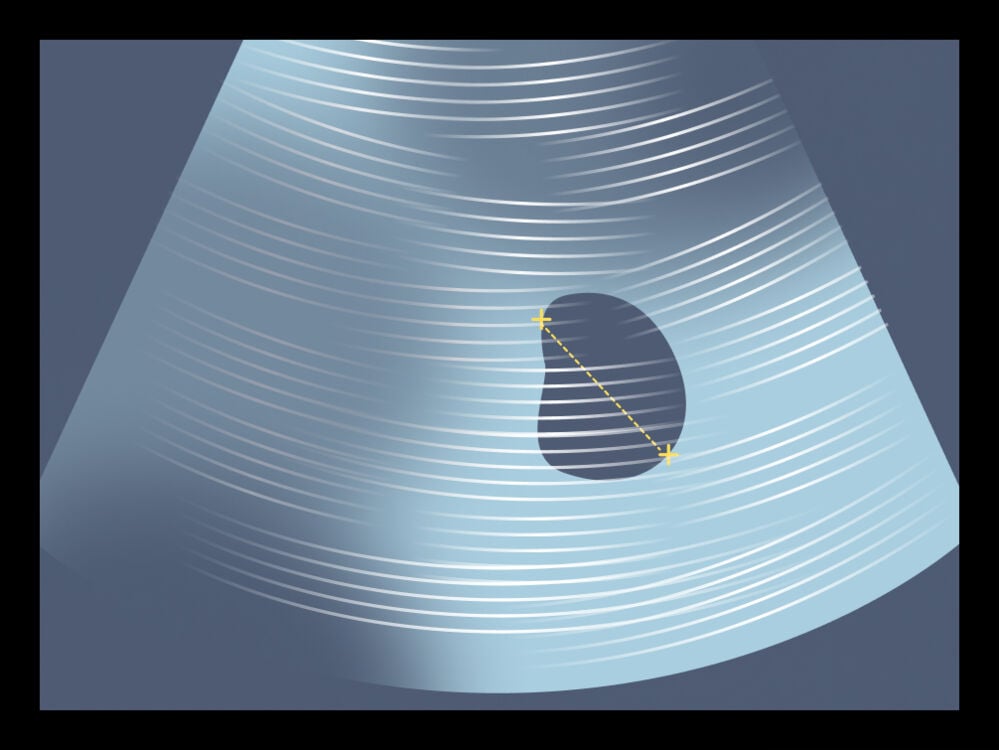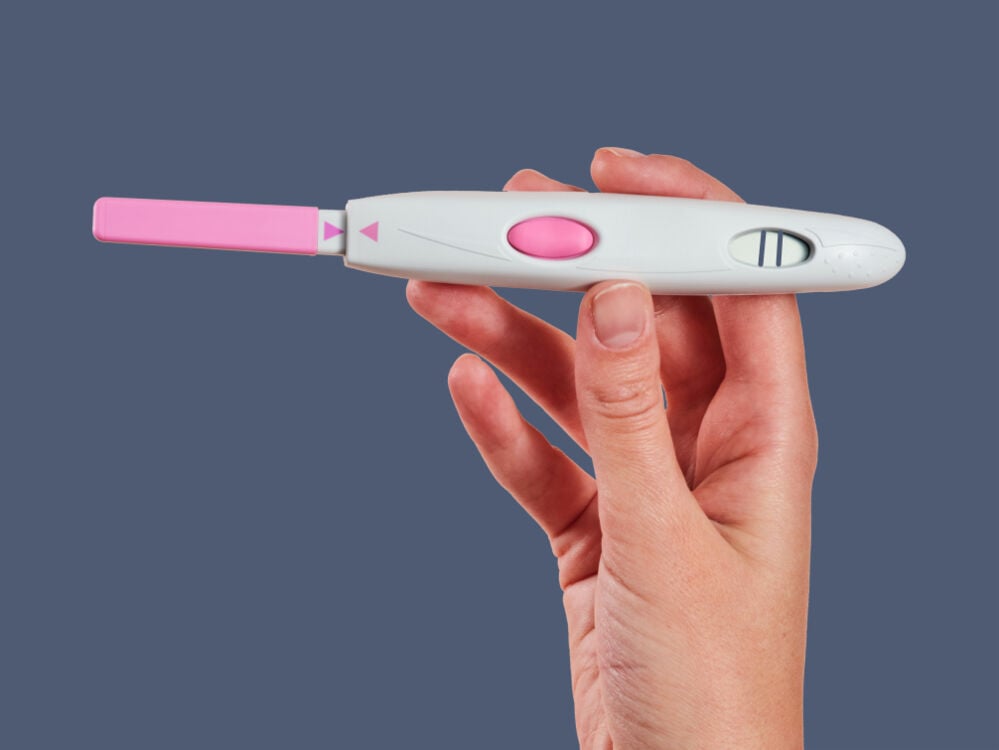A blighted ovum is the leading cause of early miscarriage and can be very distressing to experience. Here’s everything you need to know about it, from causes to symptoms and what it means for future pregnancies.
-
Tracking cycle
-
Getting pregnant
-
Pregnancy
-
Help Center
-
Flo for Partners
-
Anonymous Mode
-
Flo app reviews
-
Flo Premium New
-
Secret Chats New
-
Symptom Checker New
-
Your cycle
-
Health 360°
-
Getting pregnant
-
Pregnancy
-
Being a mom
-
LGBTQ+
-
Quizzes
-
Ovulation calculator
-
hCG calculator
-
Pregnancy test calculator
-
Menstrual cycle calculator
-
Period calculator
-
Implantation calculator
-
Pregnancy weeks to months calculator
-
Pregnancy due date calculator
-
IVF and FET due date calculator
-
Due date calculator by ultrasound
-
Medical Affairs
-
Science & Research
-
Pass It On Project New
-
Privacy Portal
-
Press Center
-
Flo Accuracy
-
Careers
-
Contact Us
Blighted ovum: Symptoms, causes, and where to find support


Every piece of content at Flo Health adheres to the highest editorial standards for language, style, and medical accuracy. To learn what we do to deliver the best health and lifestyle insights to you, check out our content review principles.

If you’ve recently been told you’ve experienced a “blighted ovum,” then things might seem a little scary and confusing right now. That’s OK.
A blighted ovum, usually called an “anembryonic pregnancy” these days, is what happens when an egg that’s been fertilized by sperm attaches to the uterus, but the embryo does not develop. It is the leading cause of miscarriage, making it, understandably, tough news for many of us to process.
What can make a blighted ovum especially upsetting is that it can cause all the typical symptoms of pregnancy, leading people to believe they are expecting. Unfortunately, the pregnancy is not viable. But it’s crucial to know that experiencing a blighted ovum doesn’t mean that anything is wrong with you.
It’s also completely natural to have feelings of loss and grief. The good news is that if you want to get pregnant again in the future, this condition is unlikely to affect your chances. It’s a random event, and many people go on to have multiple viable pregnancies afterward.
Understanding what has happened can often help, so below you’ll find answers to the most common blighted ovum questions. Knowing you’re not alone can also provide some comfort. You can read two people’s experiences of blighted ovum here.
What is a blighted ovum?
When a fertilized egg attaches itself to the uterus but doesn’t develop into an embryo, or the egg stops developing and reabsorbs into the uterine lining, it’s called a blighted ovum.
When this happens, the gestational sac (the ball of fluid that surrounds and protects the embryo at the very beginning of its development) continues to develop for several weeks, even if the embryo isn’t growing. This also happens to the cells destined to become the placenta (the organ that grows inside the uterus to provide nourishment to the fetus) in a viable pregnancy. A blighted ovum eventually results in a miscarriage.
As the placenta continues forming and growing, the levels of pregnancy hormone, human chorionic gonadotropin (hCG), also rise. Because of this, a blighted ovum will result in a positive pregnancy test and usually pregnancy symptoms, despite being an unviable pregnancy.
In some cases, you might not know you’ve experienced a blighted ovum until you get an ultrasound scan, which can be a very distressing discovery.
What causes a blighted ovum?
If you’ve been told you have a blighted ovum, know that there’s nothing you could’ve done to prevent it. Researchers are still trying to find out exactly what causes it. Some possible reasons could be a chromosomal abnormality in the embryo.

Signs and symptoms of a blighted ovum
Often, symptoms and signs of a blighted ovum look exactly like those of a viable pregnancy, including:
- Positive pregnancy test
- Sore breasts
- Missed period
Later on, however, you may notice symptoms of early miscarriage within the first trimester. These can include vaginal spotting or bleeding, abdominal cramps, and according to Professor Johannes Bitzer, “a period that is heavier than usual occurring at a later date than expected.”
If you’re experiencing any of these symptoms, there is a chance you might be having a miscarriage. But don’t panic, as there are other reasons you could be bleeding in the first trimester, such as implantation bleeding or cervical issues. That’s why it’s important to talk to a health care professional about your symptoms so that they can confirm what’s going on.
Diagnosing a blighted ovum can be difficult. An ultrasound is the only way to be sure. When you have a viable pregnancy, an ultrasound test usually reveals an embryo at around six or seven weeks. However, if you have a blighted ovum, the ultrasound scan will instead reveal an empty gestational sac with no embryo.
To make sure they haven’t misdiagnosed a blighted ovum during early pregnancy, the health care provider will typically check your hormone levels and perform a second ultrasound a week later to see if the sac is still empty.
Blighted ovum treatment options
It can be heartbreaking to find out that you have a blighted ovum, but know that you’re not alone. This condition affects many women and people with a uterus, and it doesn’t mean that there is something wrong with you.
Because the embryo isn’t properly developed, a blighted ovum will, sadly, eventually lead to miscarriage. Some people choose to wait for this to happen naturally, while others prefer to seek medical help to trigger it.
Here are a few options that you can discuss with your clinician:
- Waiting for the miscarriage to happen naturally: Since a blighted ovum does eventually lead to a miscarriage, some people choose to wait for the process to occur naturally. Often, the tissue will pass naturally in 1 or 2 weeks. If you choose this option, make sure you keep your health care provider updated and let them know if there is persistent heavy bleeding for more than two weeks.
- Medication: Your health care provider may give you oral or vaginal medication that induces a miscarriage. It may take several days for all the tissue to pass, and you may experience nausea and cramps.
- Dilation and curettage (D&C): Some people opt for surgery to remove the gestational sac. A D&C immediately ends the pregnancy, and some people find this helps with emotional closure. Your health care provider will be sure to fully inspect the pregnancy and confirm a blighted ovum before proceeding with a D&C.
How soon can you get pregnant again after a blighted ovum miscarriage?
If you’ve been diagnosed with a blighted ovum, it’s natural that you may experience feelings of loss and grief. Remember that this is totally normal. It’s also important to remember that having experienced a blighted ovum before will not harm your chances of a future viable pregnancy.
While you can technically get pregnant again as soon as your periods come back, health care providers may recommend that you wait for about three months to fully heal after a miscarriage. They can help you decide how much time to wait before trying for another pregnancy.
But whenever and however you choose to move forward, the most important thing is to make sure you are getting the support you deserve. Experiencing a blighted ovum is never easy, but with many support groups and organizations out there, plus the community here at Flo, you never have to go through it alone.
For help and support following a miscarriage caused by a blighted ovum, try reaching out to the following organizations:
Blighted ovum: The takeaway
A blighted ovum is a pregnancy without the formation of an embryo. This is why it’s now commonly called an “anembryonic pregnancy” (a more accurate and gentler, less blaming term).
While an undoubtedly distressing experience, an anembryonic pregnancy is beyond your control. If you’ve experienced one, be kind to yourself. Remember there is nothing you could have done differently, and there’s no reason it should impact any future pregnancies.


Hey, I'm Anique
I started using Flo app to track my period and ovulation because we wanted to have a baby.


The Flo app helped me learn about my body and spot ovulation signs during our conception journey.


I vividly
remember the day
that we switched
Flo into
Pregnancy Mode — it was
such a special
moment.
Real stories, real results
Learn how the Flo app became an amazing cheerleader for us on our conception journey.
References
“Bleeding during Pregnancy.” Mayo Clinic, 20 Jan. 2022, https://www.mayoclinic.org/symptoms/bleeding-during-pregnancy/basics/causes/sym-20050636.
“Blighted Ovum (Anembryonic Pregnancy).” The Miscarriage Association, 3 June 2019, https://www.miscarriageassociation.org.uk/information/miscarriage/blighted-ovum-anembryonic-pregnancy/
“Blighted Ovum: What Causes It?” Mayo Clinic, 22 Sept. 2021, https://www.mayoclinic.org/diseases-conditions/pregnancy-loss-miscarriage/expert-answers/blighted-ovum/faq-20057783.
Chaudhry, Khalid, et al. “Anembryonic Pregnancy.” StatPearls, StatPearls Publishing, 2021.
“Symptoms of Pregnancy: What Happens First.” Mayo Clinic, 3 Dec. 2021, https://www.mayoclinic.org/healthy-lifestyle/getting-pregnant/in-depth/symptoms-of-pregnancy/art-20043853.

